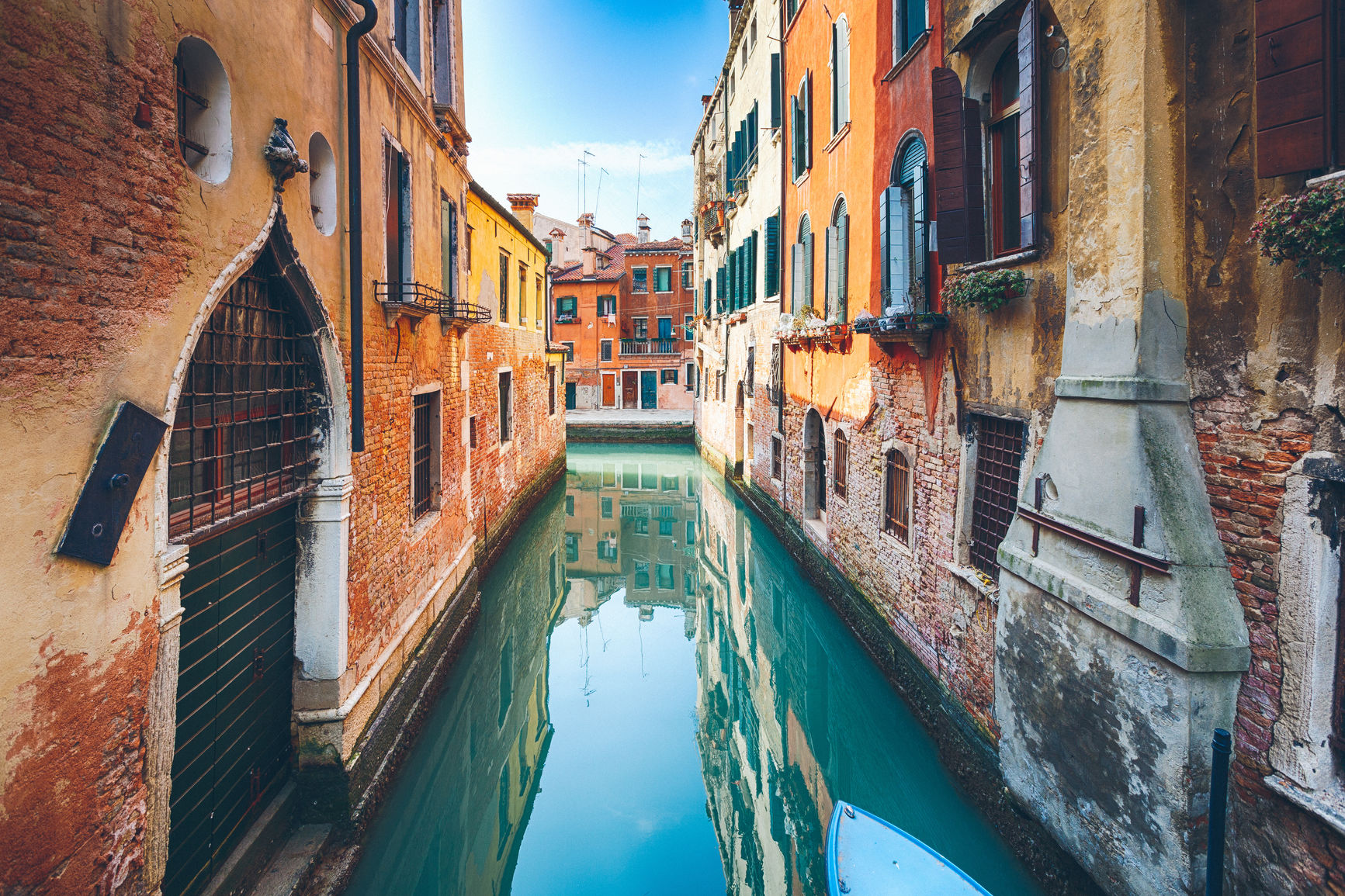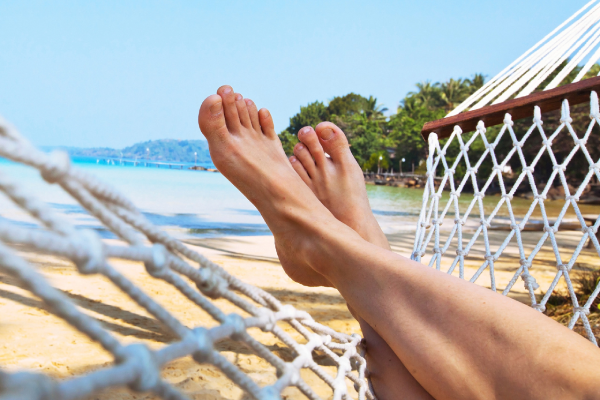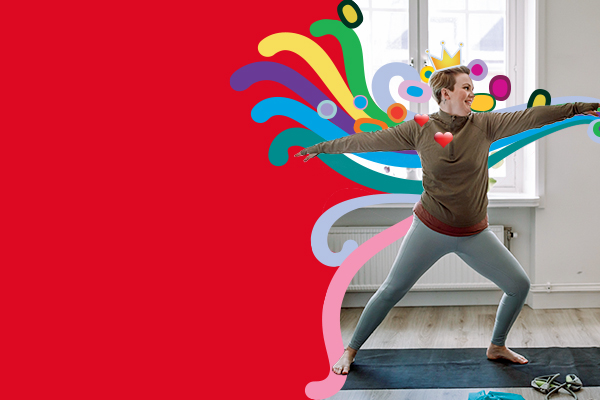-
An essential stop on the well-trodden European tour, Italy’s breathtaking landscapes, cultural treasures and delicious cuisine have been tempting travellers for centuries.
A unified state since 1861, Italy is still very much a diverse country, with each region boasting its own cuisine, landscape and distinctive dialect. From the rolling hills of Umbria to the cobblestone paths of Sicily, it’s a patchwork of local culture waiting to be discovered.
While it’s impossible to take everything in on one trip, take a note from the Italians and slow down, savour the moment and leave yourself plenty of reasons to come back. Here are our top places to go on your first trip to Italy.
Where to visit
Pompeii
In 79 AD, the city of Pompeii was buried in volcanic lava when the nearby Mt. Vesuvius erupted. The deadly event has resulted in one of the most fascinating archaeological sites in Europe, with the volcanic pumice preserving not only relics of the Roman Empire, but a perfect window into local Pompeii life.
Allow plenty of time to comb over the surreal vestiges of Pompeii; with highlights including Villa dei Misteri for some of the most stunning artwork still in existence from the ancient world, and the Tempio di Apollo for a captivating look into ancient roman religious life. For an unforgettable experience, book a show at the ancient Teatro Grande, an entertainment site dating back to 2 BC.
Venice
Venice is truly one of the world’s most unique places to visit. A floating city of marble palaces, grand piazzas, and weaving waterways, whether on foot or boat, it’s more sublime than you could imagine.
Venice’s most popular attractions - the Piazza San Marco, the San Marco Basilica, and Rialto Bridge - are a timeless drawcard for visitors, so prepare yourself for crowds. A good tip is to go early in the day to get the spectacular wonders almost to yourself! Another essential Venetian experience is to take a gondola ride. For a truly extraordinary trip, do this at sunset and ask for a gondolier who sings.
Although it’s one of the most popular bucket list destinations in the world, Venice still has its fair share of secrets. For some lesser known, but no less spectacular sights, visit the renaissance era terraces of the Ca’ d’Ora for the panoramic view of the city, taste some of the world’s best gelato at the hidden Gelateria Alaska, and experience an immersive opera in a 15th-century palazzo.
If you’re in Venice for more than three days, it’s worth spending an evening on the island of Burano. This beautiful location is just a 45-minute ferry ride from Venice, and its rainbow array of cottages and artisan shops make it well worth the trip. Have an early meal on the rooftop of seafood restaurant Riva Rosa and settle in for one of the most memorable sunsets of your life.
Rome
This larger than life city is steeped in history and culture like no other. Spend weeks in Rome and you may feel like you’ve only just scratched the surface of its sprawling sites and beauty.
Whether you’re keen to visit the ancient ruins of the Colosseum, Roman Forum and Pantheon, it’s worth taking an impressive church tour culminating in the spectacular St Peter’s Basilica, then delving into the art at the Vatican Museums. To appreciate the scale and breadth of Rome’s historical beauty, make your way to the top of Gianicolo Hill, Parco Savello or the roof of St Peter’s Basillica. A high panoramic view of the city is one that you won’t forget.
A city as old as Rome is bound to have its fair share of interesting quirks! Don’t miss the Museum of the Souls of Purgatory (where you can see eerie items such as scorched handprints on prayer books), the Capuchin Crypt at Santa Maria della Concezione dei Cappuccini, and of course, Rome’s famous catacombs.
You can’t visit Rome without sampling it’s world-famous food and wine culture. For a quintessential Roman evening, visit Piazza Navona and marvel at its incredible Baroque Roman architecture and cast of street performers. Make your way up to the stunning rooftop at the Raphael for beautiful views of the city before heading back down to sample some of Rome’s finest food at Pierluigi. Here you can taste the specialties of the Lazio region including fried zucchini flowers, spaghetti alla carbonara and cacio e pepe (cheese & pepper pasta).
Milan
Fashionistas tend to flock to Italy’s sophisticated capital around fashion week - held in February/March and September/October each year - with its reputation as the arbiter of good taste ringing true. As the birthplace of iconic fashion houses such as Dolce & Gabbana, Prada and Versace, Milan offers some of the finest retail in the world. You don’t have to be a shopaholic to appreciate the beauty of Corso di Porta Ticinese, where you can peruse the latest off the catwalk, alongside homewares and jewellery.
Head to the Milan Duomo for a heart-stopping climb to a rooftop manned by gargoyles and saint sculptures, as well as a spectacular view over Milan’s cobbled streets. Book an opera at Italy’s finest theatre, La Scala, and don’t miss Leonardo da Vinci’s most awe inspiring work, The Last Supper.
Tuscany
A rolling landscape of olive groves and cypress trees, Tuscany is as pretty in real life as it appears in the countless films it has inspired. While the countryside fills the tourist brochures, the central Italian region of Tuscany is also home to renaissance and medieval gems, Florence, Siena, Volterra and the walled hilltop town of San Gimignano.
While touring Tuscany, dabble in the delicious local cuisine with an Italian cooking class, which typically end with a triumphant communal meal. If in the area, try booking a class at the Castel Monastero, a restored 1,000-year-old monastery that will have you whipping up Tuscan feasts in no time.
Sicily
The marvellous island of Sicily blends a mix of ancient influences - mainly Arabian, Roman and Phoenician - promising an experience very distinct from the mainland. A distinctive dialect, cuisine and landscape add further to Sicily’s singular charms, and a scattering of ancient relics lie waiting to be explored.
Explore the fascinating archeological sites of Agrigento, immerse yourself in the bustle of gritty Palermo, then be sure to put your feet up in the picturesque resort town of Taormina with its dramatic views over Enna.
Arts and culture
Who hasn’t visited Rome and tossed a coin in the Trevi Fountain? As they say, when in Rome, and this traveller’s rite of passage ensures the gorgeous Trevi Fountain constantly buzzes with tourist traffic.
Late nights or early mornings are when it’s at its quietest, setting the scene for your Anita Ekburg moment! With the coin-tossing tradition a way of ensuring your return, prepare for plenty more memories gazing at this splendid baroque site.
Although you’ve seen them reproduced countless times, and despite the noise, queues and occasionally irate security guards, nothing prepares you for your first encounter with Michelangelo’s works in the Sistine Chapel in Rome.
‘Creation’ lies on the chapel’s barrel-vaulted ceiling and ‘Last Judgement’ on the back wall. Drawing eyeballs like bees to honey, they’re absolutely mesmerising to behold. The Sistine Chapel is just the beginning of the treasure trove that is the Vatican’s art collection.
Regarded by many as the heart of Catholicism, St Peter’s Basilica is a breathtaking shrine in the Vatican with an interior as ornate as its famous silhouette.
The basilica’s centrepiece, the glittering dome, was created by Renaissance sculptor Michelangelo who also completed the graceful Pietà in its entrance. Named after St Peter the Apostle and reputedly built on the site he was crucified, St Peter’s Basilica’s lavish bronze altar marks the tomb of its namesake below.
Italian food
While Italy’s rich history, art collections and dreamy landscape are impressive, there are plenty of tasty reasons to travel to this great land. As a culture that absolutely adores food, rest assured you will be handsomely rewarded come meal-time in Italy. From the luscious butter, cream and truffle-based delights of the north to the fragrant, tomato-infused, vegetable rich dishes of the south, follow your nose as you graze on the distinctive regional flavours throughout the country. Washed down with fantastic wine and bolstered with snacks of sliced prosciutto, arancini, fresh cheeses and soft focaccia, Italian food thoroughly hits the spot for a worn-out traveller.
Weather
Long stretches of the Mediterranean coastline, combined with its mountainous inland, explains Italy’s variable climate. In the north around the Alps and the Tuscan-Emilian Apennines, the climate is extreme, with cold winters and humid summers. Light snowfall in the Alps can start around September and October, falling heavily throughout the winter months. Milan in the north typically hits high summer temperatures around 30°C and winter lows of around 3°C.
The central regions experience less variation in climate, while the south is where Italy’s reputation as a Mediterranean paradise is formed. Expect mild winters and long, lazy summers with summer high temperatures between 30°-35°Cs and winters not descending much lower than 10°C.
Health and safety
Vaccinations
Despite no specific vaccinations being flagged for a trip to Italy, it’s important to ensure your routine vaccinations are up to date prior to travel. This includes tetanus, diphtheria, whooping cough, polio, measles, mumps and rubella and chickenpox.
Tick-borne encephalitis is also a viral disease that can flare in Europe at certain times of the year. If travelling in forested areas, it’s recommended you wear repellent and appropriate clothing to protect against short-term exposure.
It is recommended to speak with your doctor when planning your trip to find out which vaccinations you may need. Keep in mind that some vaccinations require more than one dose, so it is best to chat to your doctor well in advance of travel.
Personal safety
Petty theft is generally the main concern when it comes to travelling around Italy, and exercising common-sense is usually the best precaution. It’s recommended you place your wallet in a front pocket, keep a close eye on your handbag or backpack, and leave your valuables in a hotel safe where available. When you find yourself in crowded areas like train stations or busy tourist attractions, be extra wary of your belongings and ensure your bags are fully zipped. If you’re travelling by rental car, ensure the car is locked when parked and avoid leaving any valuables visible to passers-by.
In the case of an emergency in Italy, dial 112 for fire, police and ambulance services.
Always be on the safe side when you travel by taking out comprehensive travel insurance. Medibank Travel Insurance gives you overseas leading hospital, accident and medical evacuation cover while you’re travelling. And with our comprehensive plans, you'll be protected for a host of other surprises like lost luggage, unforeseen cancellations and rental car insurance excess.*
Money and costs
Currency
Italy’s currency is the Euro, with notes in denominations of 500, 200, 100, 50, 20, 10, and 5 euros and coins to the value of 2 and 1 euros and 50, 20, 10, 5, 2 and 1 cents.
Costs
While not an especially cheap travel destination, costs for travelling around Italy can vary significantly depending on where and when you go. As a general rule, high season travel is more expensive than low season, particularly around the coast, and the main tourist cities will be more expensive than the rural areas.
If you’re preparing your own meals and staying in hostel accommodation, around €50–60 per day is a feasible budget, however those keen to stay in a simple hotel, see some sights and eat one meal a day at a sit-down restaurant can expect to pay between €120–150 per day.
If a service charge isn’t included on your restaurant bill, a 10% tip is customary, but not obligatory. A value-added tax (VAT) of around 20% is added onto most goods sold in Italy. If you are leaving Europe and have spent over €155 on a purchase, you can obtain tax document when you purchase and claim your VAT back at the airport when departing. Allow enough time to claim VAT as the queues at major airports can be lengthy.
Payment methods
Card has become the most convenient method of payment while travelling and Italy is no exception. Credit cards are widely accepted and ATMs are available in all cities and most small towns have at least one.
If you need to exchange foreign currency, head to a bank, exchange office or the local post office, with the latter often offering the most reasonable rates.
10 best places to visit in Italy: explore the top things to do in Italy

* Important things you should know: Limits, sub-limits, exclusions and conditions apply. This is general advice only. Medibank Private Limited, ABN 47 080 890 259, an Authorised Representative, AR 286089, of Travel Insurance Partners Pty Limited, ABN 73 144 049 230 AFSL 360138 arranges the insurance on behalf of the insurer. The insurer is Zurich Australian Insurance Limited ABN 13 000 296 640, AFSL 232507. Please consider your own needs and the Combined FSG/PDS to decide if this product is right for you. For information on the Target Market and Target Market Determinations, visit medibank.com.au/travel-insurance/help/
-
How to set up your bedroom for better sleep
The sleep experts share some secrets.
-
5 healthy habits (and how to keep them)
New Year's resolutions are easy to make and hard to keep. Discover how to make healthy habits for 2024.
-
How to feel more connected this festive season
Feeling stressed or lonely this festive season?
-
Life’s a beach
If you want to take it easy at the beach, start by making the trip easier on yourself. Cameron Williams reveals the discoveries that made his time at the beach more enjoyable.
-
Learn how small bursts of movement can have a positive impact on employee wellbeing
-
How to do a digital detox
Reduce screen time with a digital detox, and improve your mental health and wellbeing.






